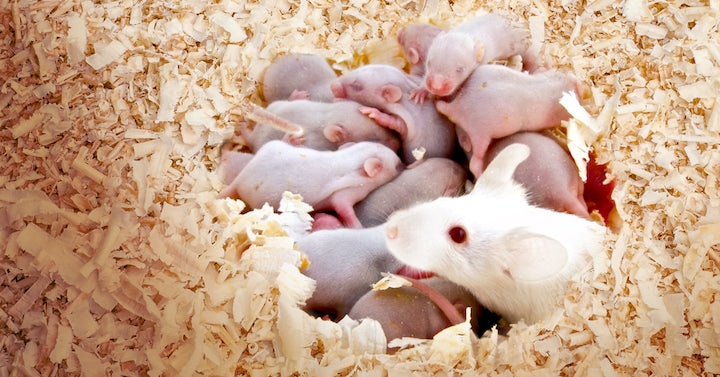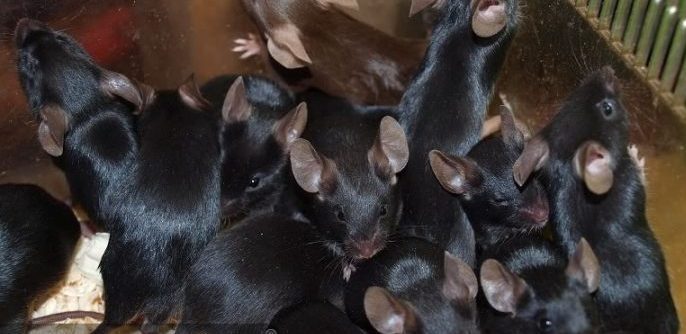When breeding mice in laboratories, optimizing the health and performance of pups starts before they are even born. This article will shed some light on how leading institutions are reducing pup mortality rates while prioritizing the health and welfare of their weanlings.
In March 2019, ClearH2O conducted a survey titled “Breeding Support and Pup Health” among AALAS members. The survey results not only provided insights on the challenges the respondents encounter during the various stages of the breeding process, but also how they mitigate those issues in order to improve the survivability, growth, and performance of pups.
Keeping Laboratory Mice Stress-Free and Properly Nourished
To keep stress low during gestation, the laboratory mice must first be provided with a comfortable atmosphere with no excessive noise, lights, smells, or handling.
Respondents of the “Breeding Support and Pup Health” survey observed an overall increase in productivity and improved reproductive performance when using dietary gel supplements in their breeding program. They reported that females receiving dietary gel were less stressed, had improved lactation, and recovered quicker from pregnancy. The benefits were not only observed among the females, but also among the pups, where survey respondents using dietary gel supplements noted larger litters, healthier mice with higher weight, and increased pup survival.
Iron deficiency during pregnancy can lead to many issues related to fetal development, including anemia, low weight, and more. Omega-3 is another beneficial nutrient when provided during both pregnancy and lactation for early brain development of the embryos and pups. Not surprisingly, ClearH2O’s DietGel® Prenatal, a dietary gel supplement formulated for breeding mice, contains both 2% iron and 2.2% Omega-3 (together with 15.2% fat from fish oil and flax seeds).
Results from the same survey indicated that almost 65% of respondents encountered cannibalism issues. Malnutrition, undernutrition, and lack of protein might lead females to eat their pups. ClearH2O’s DietGel® Prenatal contains 14.3% protein, which can be used to help mitigate protein deficiencies among breeders.
To try our products firsthand, request a sample.
Weaning Laboratory Mice From Their Parents’ Cage
Generally, laboratory mice are removed from their parents’ cage, or weaned, at 3-4 weeks of age.
Many institutions require a specific weaning cage set up including items such as water gel, moistened food, soft diet supplements, and/or nesting materials to help the animals transition to their new environment without the breeding female.
The addition of hydration and dietary gel supplements provides essential support for weanling pups to better endure the critical first few days of transition during the weaning process. It gives them easier access to water and food when they are too small to reach the water bottle and wire rack filled with food pellets.
Survey respondents using ClearH2O’s DietGel® Recovery, DietGel® 76A, and DietGel® Boost reported that they help weanlings better acclimate to the cage setting, such as figuring out the Lixit or being able to reach and chew food pellets.
Optimizing Your Breeding Process for Healthy Litters
Providing a stress-free environment with enrichments and nutritional supplements placed directly in the laboratory mice cages can successfully enhance the health and welfare of the pregnant mice and their litters.
When it comes to delivering hydration and dietary supplements to laboratory mice, ClearH2O’s highly-palatable gel formulations are an effective solution. In fact, HydroGel™ is the #1 choice of laboratory animal breeders worldwide.
For more information about optimizing your entire colony planning and breeding process—and for more results from the “Breeding Support and Pup Health” survey among AALAS members—download the guide, “Best Practices for Rodent Colony Planning, Breeder Support, and Pup Health”.




Leave a comment
All comments are moderated before being published.
This site is protected by hCaptcha and the hCaptcha Privacy Policy and Terms of Service apply.